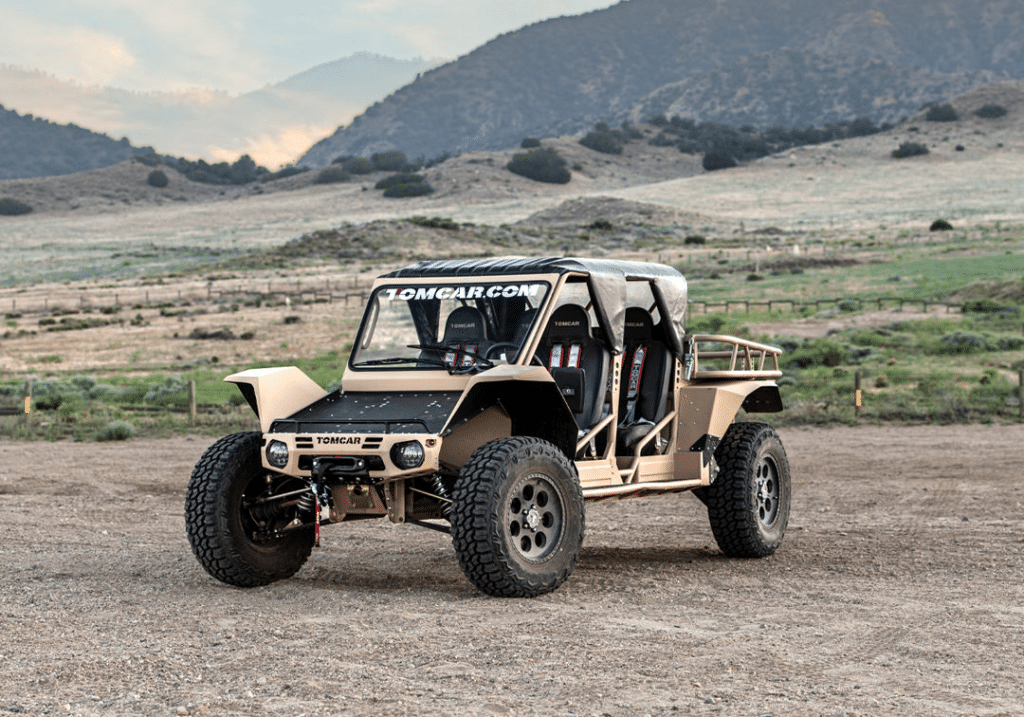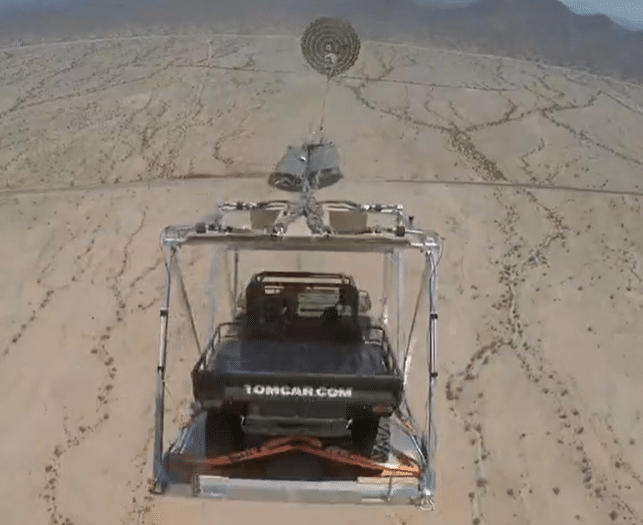Founded in Israel in 1995 to support a specific military requirement, Tomcar evolved into a US-based company producing ultra-dependable, highly functional, all-terrain vehicles for private, commercial, and military use. These vehicles are awesome!

Jonathan Drori is the US company lead engineer and is part of the team responsible for the Tomcar series of vehicles.
“I absolutely love that OpenBOM lets me share accurate, complete BOMs with vendors, partners, customers, my colleagues in Israel, and so many more.”, says Jonathan. “It is great for my team and great for the company.”
Jonathan brought OpenBOM to Tomcar to improve and formalize the agreements the company has with manufacturing partners.
“Simply put, before OpenBOM, we did not have a final BOM that was accurate or easy to share”, he says, “We needed a full product BOM which OpenBOM delivered!”
For Tomcar, OpenBOM provided the level of communication they had been looking for.
“We have detailed formal agreements with partners, we could tell them what to build [in terms of the product], but couldn’t tell me what to buy, there was too much Tribal Knowledge!”, he says.

“Using OpenBOM, the Tomcar is in full production now with a full BOM mastered in OpenBOM.”
In fact. The Tomcar TX model has been in production with OpenBOM for some time now. Most would consider the TX model to be in sustaining as the design has matured and the team now focuses on new products.
“We have the occasional ECO and BOM update. I love how we can click a button in Solidworks and get a BOM for comparison to our production build.”
Tomcar is using OpenBOM for new products and currently has three vehicles all in OpenBOM.

“We are excited about the new Tomcar EV”, says Jonathan. The Electric Hybrid Vehicle is in early release and preparing for high-volume manufacturing. We built it in OpenBOM.”
“In a nutshell,” says Jonathan, “OpenBOM worked great for us. It was easy to buy and implement. It allowed us to build a database of all the parts on our vehicle, and with a few tweaks and help from the OpenBOM support team, we got it done.”
“Tomcar’s OpenBOM Experience – Q&A with Chief Engineer Jonathan Drori – November 2022 update”
Q&A – Jonathan Drori (JD) and Steve Hess (SH)
The company’s lead engineer, Jonathan Drori, had a lot to say about their amazing vehicles and how OpenBOM is helping the company reach its product and sales goals.
SH: When we last spoke, TOMCAR was planning an electric version of the successful utility vehicle. How did that go?
JD: Terrific. We launched an electric mining variant of our most popular TOMCAR. The new EV is built and maintained entirely in OpenBOM.
SH: Tell us, did you need to do any special planning to build the electric variant?
JD: Actually, yes. We used the opportunity to completely refactor our BOM structure in OpenBOM. We had a rather flat BOM structure up to that point. OpenBOM’s flexibility allowed us to reimagine our TOMCAR BOMs in a much higher resolution, with more granularity of sub-levels and BOM components.
SH: How did that help?
JD: The modular BOM approach unlocked the reuse we had planned in the original TOMCAR. The EV variant uses much of the same chassis and other componentry with a completely new powertrain. Preparing a powertrain BOM that can be dropped into the TOMCAR allowed us to produce a new product while maximizing reuse.
SH: Can you tell us about the OpenBOM adoption at TOMCAR over the past year?
JD: Definitely. We now run the entire engineering side on OpenBOM. We hired a new product manager whose role is to manage the products, variants, and supply chain communications using OpenBOM. OpenBOM is easy to learn and adapt to new projects and easy to relearn when we have to return to legacy products.
This new role also prepares all the financial documents for the business side of operations. He uses OpenBOM to organize the work by project.
In the past year, OpenBOM has become a vital integrated part of the TOMCAR process. We like it!
SH: Switching gears (no pun) a bit, have you discovered any new features since we last met?
JD: For sure! Revisions! We use the OpenBOM Revision function to help us control two very important data flows within our company; 1/ to answer that simple question, “What did we ship in this version of the product?”, and 2/ when communicating with our supply chain.
The ability to refer to a particular ECN with an OpenBOM revision of a BOM or part is critical in managing our sub-contractors. TOMCARs product managers need to understand what we ordered, and what was delivered, and be able to resolve any discrepancies quickly. With OpenBOM, we simply find the item or BOM, check the revision and date and we can understand exactly where in the supply line timeline the item should be.
SH: You mentioned your supply chain. How does OpenBOM help with getting parts in the door?
JD: That’s simple. Prior to OpenBOM keeping track of what was ordered was a struggle, especially if the engineer specified one supplier and then we later switched to another supplier.
Now, we keep a list of vendors and their information right in OpenBOM. When a buying decision is made, we take a few minutes to update the item information with the proper vendor information, vendor part number, etc, and we know we will have the proper supplier in the future. Even if we have to come back years later.
SH: Is your team using any of the CAD integrations?
JD: Yes, we’re using the Solidworks integration and it works great. I should add that we have a lot of product information that is not in CAD. That’s what we love about OpenBOM. We pull a product structure assembly/part list from CAD and then add much of the information in OpenBOM.
For our EV variant, we pulled a full engineering BOM from CAD, then use OpenBOM to produce a manufacturing BOM from that. OpenBOM’s ability to add items and properties as well as to reorder the BOM itself in Multi Level is very important to us.
SH: Does your team work in MultiLevel BOM?
JD: Exclusively. Our recent restructuring of our product BOMs requires that we imagine our BOMs as connected levels of sub-assemblies. I must say, that recently we have noticed real improvements in OpenBOMs MultiLevel functions; faster operations, faster rendering, and the ability to have the same sub-level open in many places in the BOM.
Some other improvements we like are the ease of copy/paste of images. While OpenBOM always supported thumbnail images, recently we discovered how easily we can copy images from our supplier pages and paste them into our item catalogs. It’s easy and it just works.
SH: What are your plans for the future?
JD: We are launching a partnership with GM to bring a new engine to TOMCAR. We will be relying on OpenBOM to bring that to fruition.
To learn more about Tomcar visit www.tomcar.com
To learn more about OpenBOM visit www.openbom.com

Join our newsletter to receive a weekly portion of news, articles, and tips about OpenBOM and our community.
